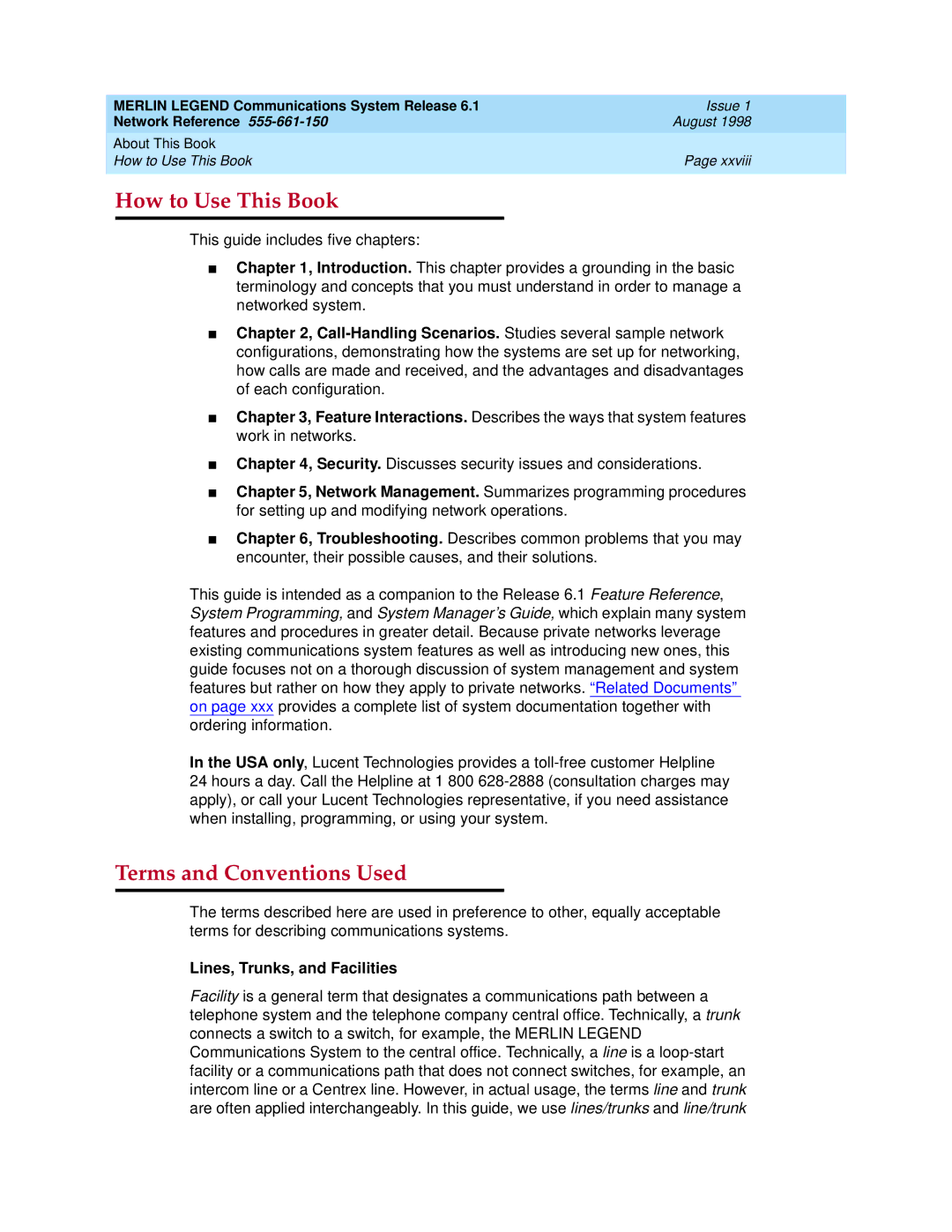MERLIN LEGEND Communications System Release 6.1 |
| Issue 1 | |
Network Reference |
| August 1998 | |
About This Book |
|
| |
How to Use This Book |
| Page xxviii | |
|
|
|
|
| How to Use This Book | 0 | |
|
|
|
|
This guide includes five chapters:
■Chapter 1, Introduction. This chapter provides a grounding in the basic terminology and concepts that you must understand in order to manage a networked system.
■Chapter 2,
■Chapter 3, Feature Interactions. Describes the ways that system features work in networks.
■Chapter 4, Security. Discusses security issues and considerations.
■Chapter 5, Network Management. Summarizes programming procedures for setting up and modifying network operations.
■Chapter 6, Troubleshooting. Describes common problems that you may encounter, their possible causes, and their solutions.
This guide is intended as a companion to the Release 6.1 Feature Reference, System Programming, and System Manager’s Guide, which explain many system features and procedures in greater detail. Because private networks leverage existing communications system features as well as introducing new ones, this guide focuses not on a thorough discussion of system management and system features but rather on how they apply to private networks. “Related Documents” on page xxx provides a complete list of system documentation together with ordering information.
In the USA only, Lucent Technologies provides a
Terms and Conventions Used | 0 | |
|
|
|
The terms described here are used in preference to other, equally acceptable terms for describing communications systems.
Lines, Trunks, and Facilities
Facility is a general term that designates a communications path between a telephone system and the telephone company central office. Technically, a trunk connects a switch to a switch, for example, the MERLIN LEGEND Communications System to the central office. Technically, a line is a
